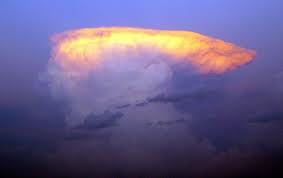 |
| East Coast Storm 2011 |
Recent events such as Hurricane Katrina and the Japanese earthquake have shown us that having an emergency plan could mean the difference between saving your pond and total destruction.
Smaller Storms
Preparing for smaller storms and storms that you have more notice on is somewhat easier then preparing for a large storm. Taking a few simple steps will help guide your pond through the storm.
1) Stop feeding your fish. Your pond contains enough natural food sources that your Koi will not starve for a long amount of time. If the storm does any damage to your filtration process, not feeding you fish will cut down on the chance of any ammonia problems later on.
2) Do as big of water change as possible to your pond. In the case that something goes really wrong and you are unable to attend your pond right away, your Koi will have the freshest water available to them. Also, leave out several inches of water to make up for in-coming rainfall. This way, there will be less chance of your pond overflowing.
If you have some type of drainage system, make sure to clear it of any debris so it will work at its full potential. If you pond is ground level and high waters are expected, you can add protection by sand bagging around the area. If nothing else, this may keep your koi confined within the area if flooding occurs.
3) Net over your pond to protect it from any flying debris. Using the same net you use during the fall to keep leaves out should suffice, as long as you properly secure it down.
 |
| Hurricane East Coast 2011 |
4) Remove anything that could potentially blow over, away, or fall into your pond. A good rule of thumb, if you can push it over, so can the wind. Items that could blow away should be completely removed from the area and placed indoors.
Large Storms
Large storms like the recent hurricanes prevent any type of preventative measures from being successful. The only real way to save your pond in these types of events is completely remove your fish from the pond.
First, it is always a good idea to have all the equipment needed to transport your Koi on hand. If you are having an emergency with your Koi, you may or may not have time to make a trip to your local pet store to gather what you need. The equipment needed to bag and transport Koi is small, and easily stored when not in use.
Bags- You must have the proper bags on hand to transport Koi. Do not attempt to transport your Koi in trash or regular plastic bags, as they are not designed for this, and may cause damage to your Koi. Unless you remembered to keep the bags you brought your koi home in originally, you will have to make a trip to your local pet store. Make sure to get bags sizable enough to hold your Koi.
Rubber Bands- You will need quite a few rubber bands for each bag you buy. Make sure that your rubber bands are good quality, as you do not want the pressure from the water to pop the rubber band in the middle of the transport.
Net- You will need to have a net sizable enough to compete with your Koi. You will never need the net to pull the Koi out of the water with, but you will need it to lead and direct your Koi into the place you want them. Nets can potentially damage your Koi, especially with the larger Koi.
 |
| Thunder Storm Ohio 2010 |
Paint Bucket- A paint bucket is a better option for catching your Koi, as they cannot hurt your Koi like a net can. Make sure that your bucket is sizable enough to hold your Koi.


















0 comments:
Post a Comment